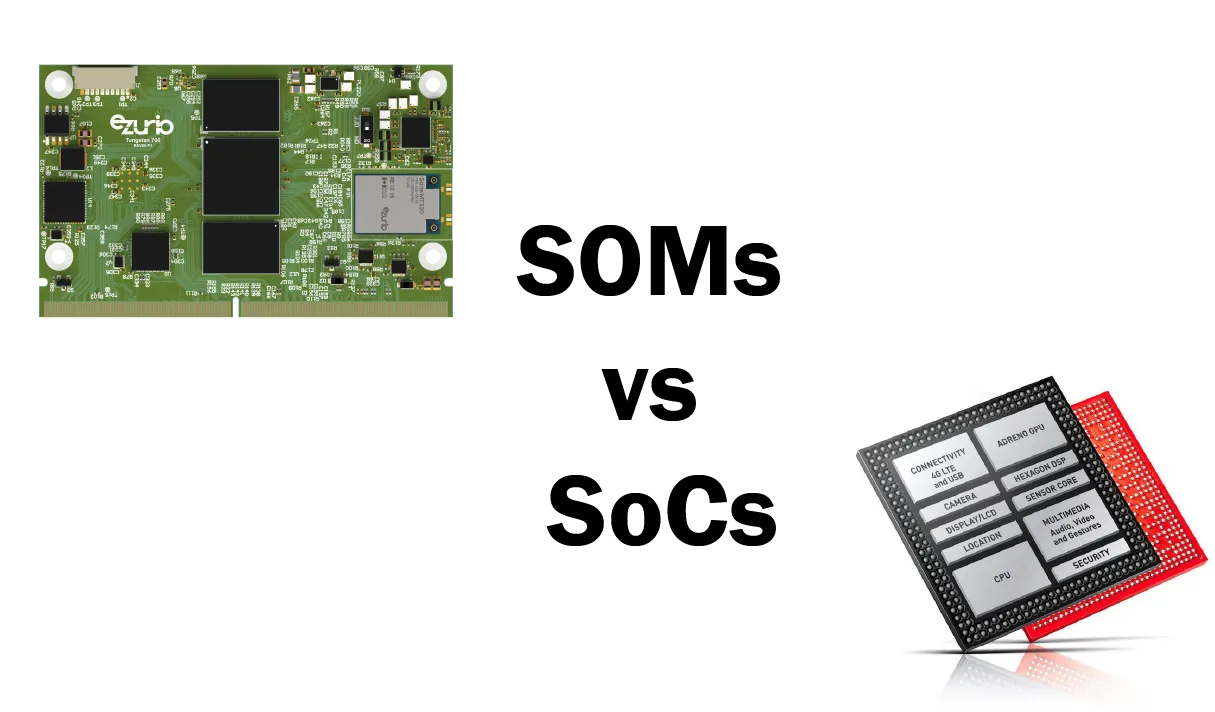
SoC vs SoM: What's the Difference?
Global electronic component supplier AMPHEO PTY LTD: Rich inventory for one-stop shopping. Inquire easily, and receive fast, customized solutions and quotes.
The terms SoC (System on Chip) and SoM (System on Module) refer to two different but related types of electronic design components. Here's a clear comparison to help you understand the difference:

System on Chip (SoC)
Definition:
An SoC is a single integrated circuit (IC) that contains all the essential components of a computer or electronic system. This typically includes:
-
CPU (central processing unit)
-
GPU (graphics processing unit)
-
RAM (sometimes)
-
ROM/Flash memory (sometimes)
-
I/O controllers
-
Timers, DMA, etc.
Key Characteristics:
-
Miniaturized and integrated: Everything is on one silicon chip.
-
Custom-designed: Often tailored for specific applications (e.g., smartphones, IoT).
-
Power-efficient: Designed for low power consumption.
-
Example SoCs:
-
Qualcomm Snapdragon
-
Apple M-series chips
-
STM32F4 (in microcontrollers)
-
Use Cases:
Phones, tablets, embedded systems, wearables, microcontrollers.
System on Module (SoM)
Definition:
A SoM is a small PCB (Printed Circuit Board) that integrates an SoC plus additional components needed for a complete system, such as:
-
RAM
-
Flash storage
-
Power management
-
Clock crystals
-
Ethernet PHY, USB, Wi-Fi, etc.
Key Characteristics:
-
Pluggable module: Meant to be integrated into a larger carrier or baseboard.
-
Simplifies design: Lets engineers focus on carrier board design while using a pre-built compute module.
-
Scalable: Easy to upgrade performance by switching to a newer SoM with the same pinout.
-
Example SoMs:
-
Raspberry Pi Compute Module
-
NVIDIA Jetson modules
-
Toradex Colibri series
-
Use Cases:
Industrial applications, robotics, medical devices, gateways, advanced embedded systems.
Analogy:
-
SoC = Engine
-
SoM = Engine + Transmission + Fuel System on a bolt-in frame
-
Carrier Board = Chassis where SoM gets mounted
Summary Table:
| Feature | SoC | SoM |
|---|---|---|
| Form Factor | Single chip (IC) | Small PCB/module |
| Integration Level | Very high | High, with external components |
| Flexibility | Low (fixed design) | High (modular, replaceable) |
| Ease of Use | Requires expert PCB design | Easier to integrate in products |
| Target Audience | Chip/system designers | Product/system developers |
If you're designing a custom board from scratch, you'd use an SoC. If you want to prototype or build a product faster, using a SoM can save time and reduce risk.
Related Articles
- ·DS18B20 Temperature Sensor Detailed Explanation and Use Cases
- ·How to build an AI agent using Raspberry Pi?
- ·STM32 PWM Principle and Application
- ·How to build a Raspberry Pi robot?
- ·How to Make a STM32 CNC 4 Axis?
- ·UART Serial Communication Experiment Based on Raspberry Pi 4B and STM32
- ·How to choose STM32 clock?
- ·How to make a website the easiest way in Raspberry Pi 4?
- ·The Application of Embedded Electronics in the Field of Consumer Electronics
